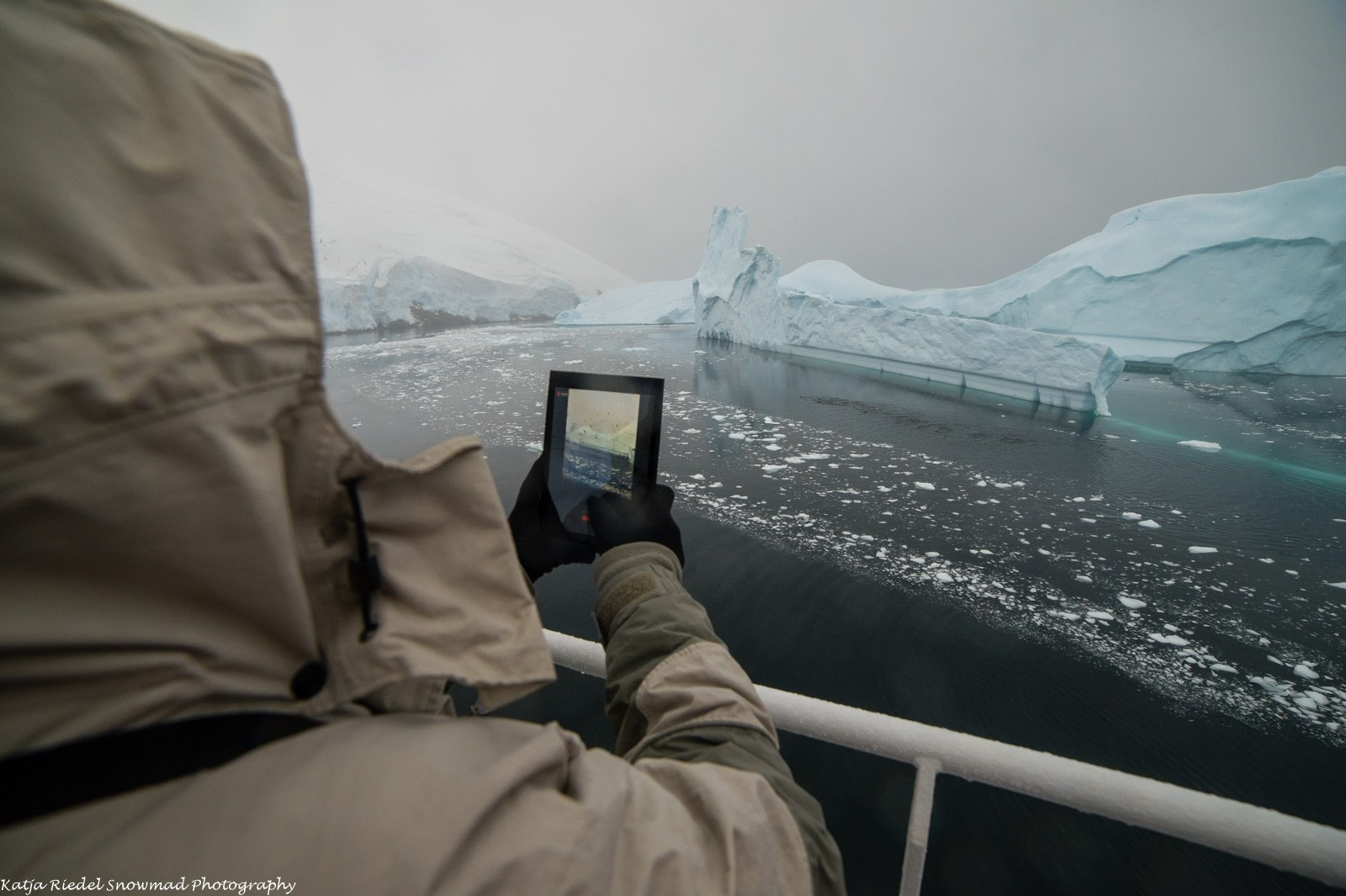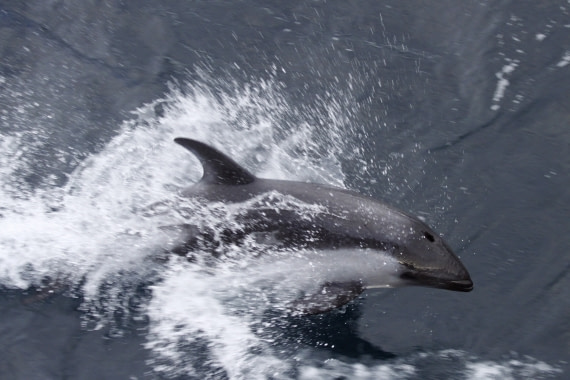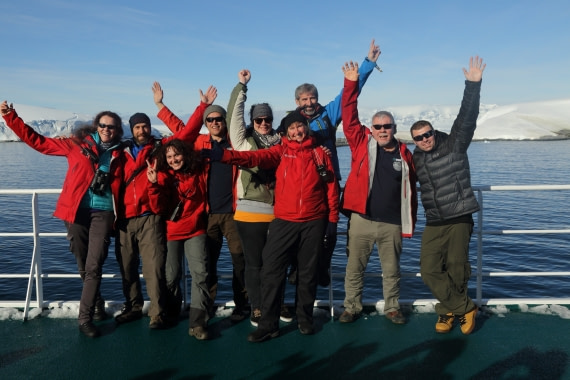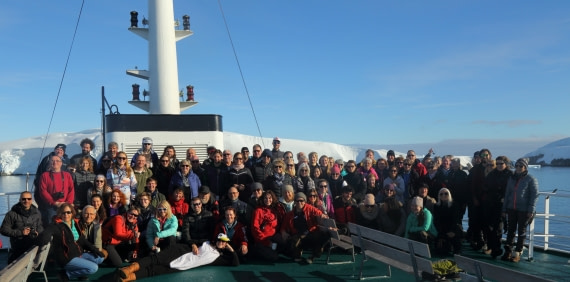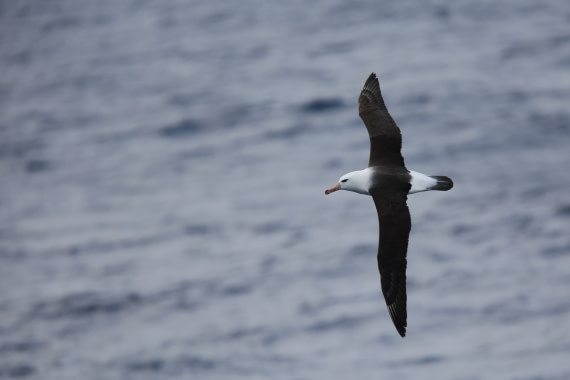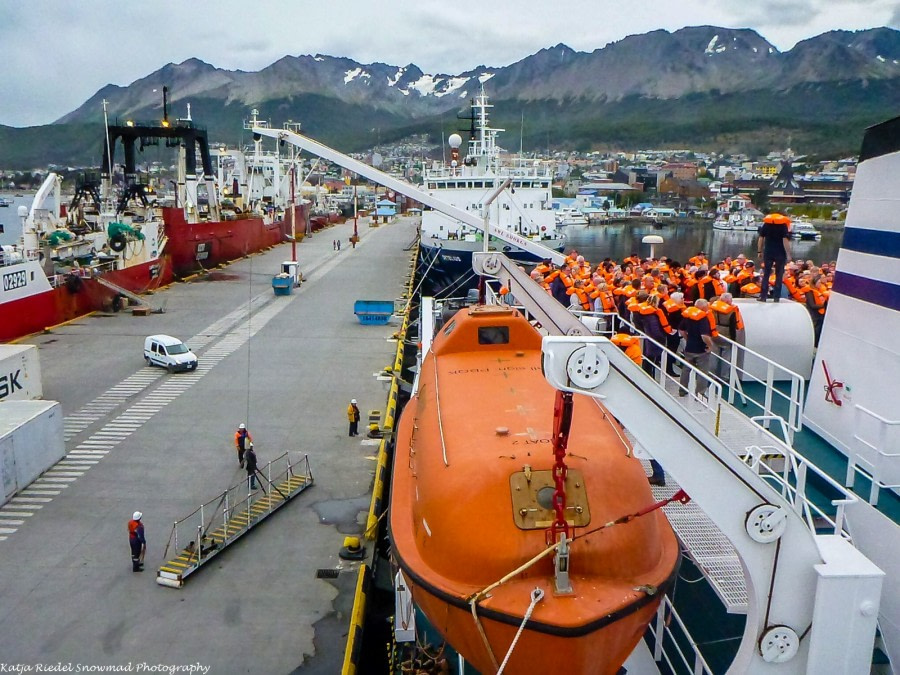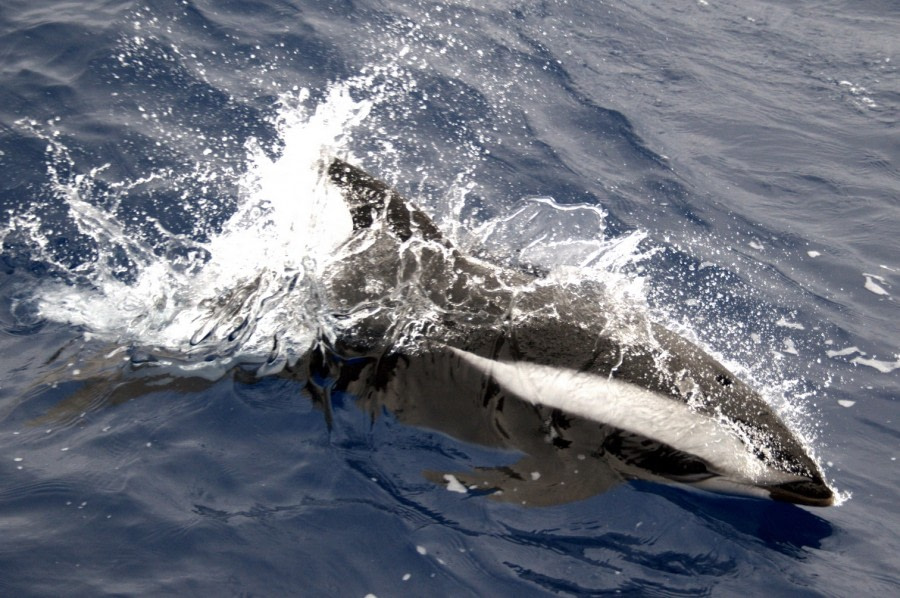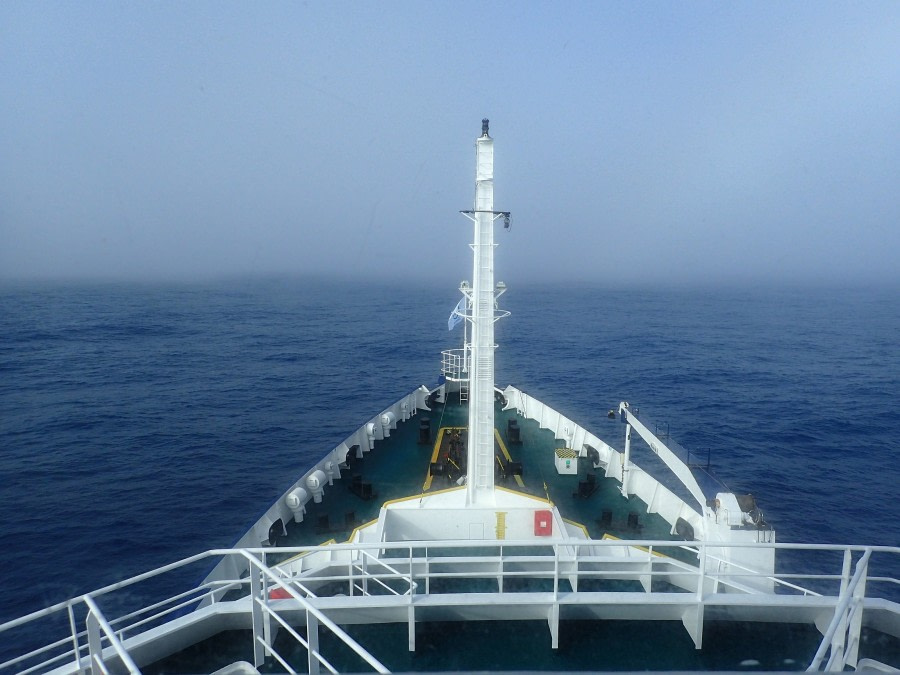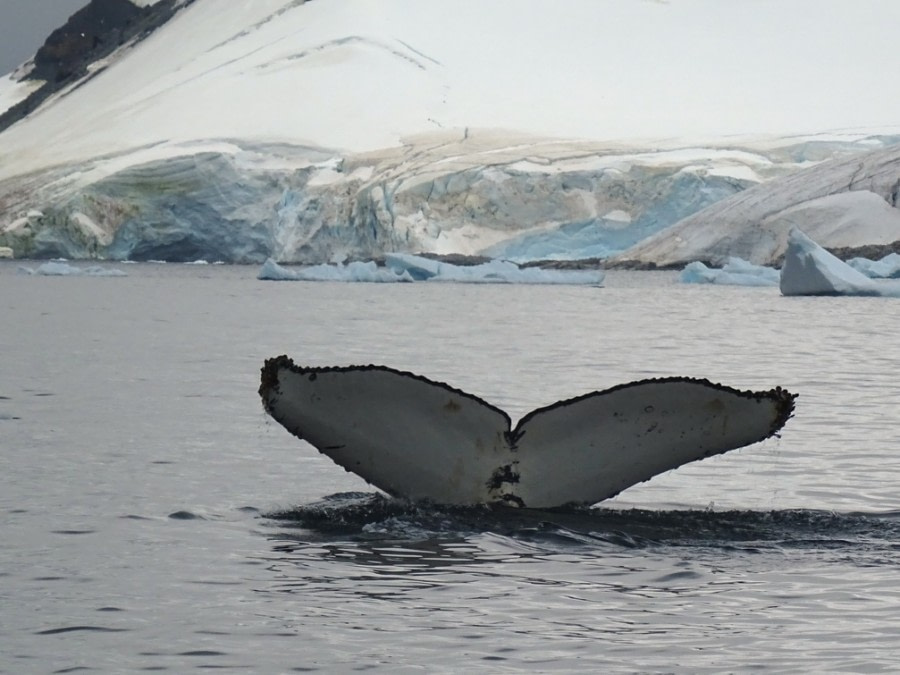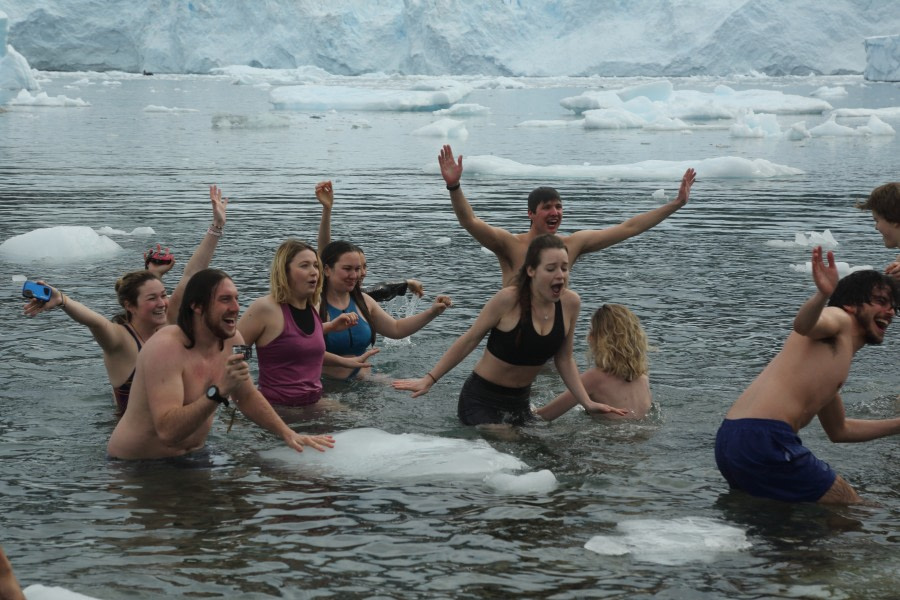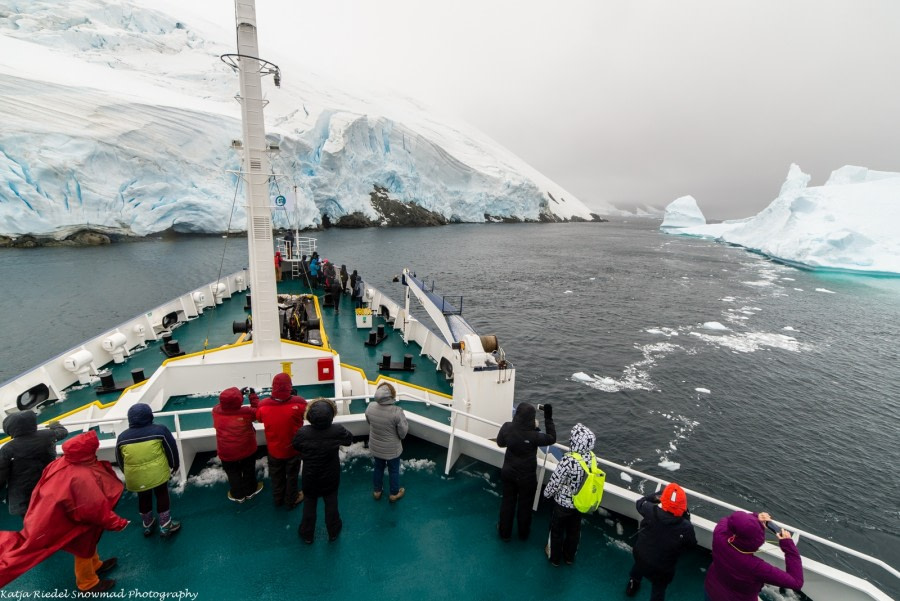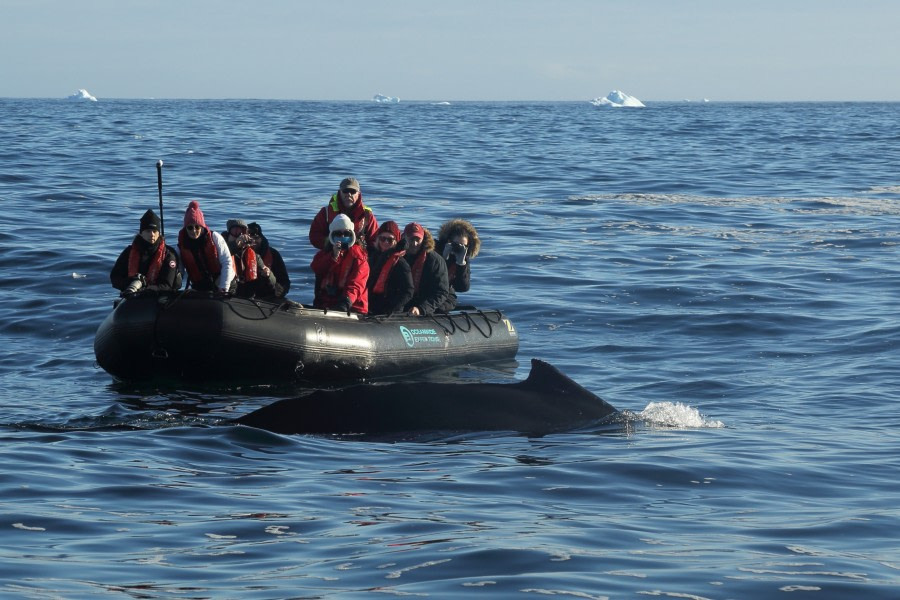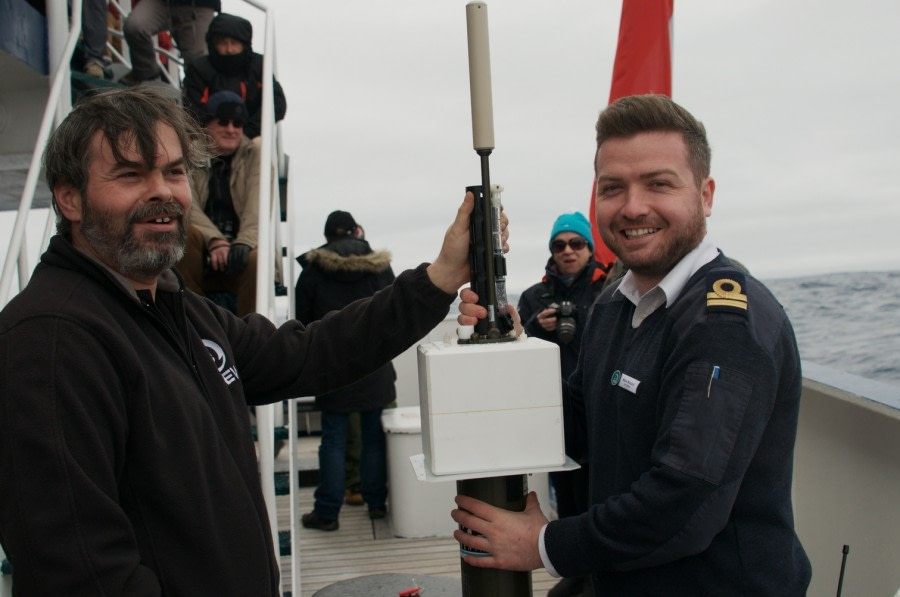| Date: |
20.03.2017 |
| Position: |
064°38’ S / 062°36’ W |
| Wind: |
N/E 3-4 |
| Weather: |
cloudy |
| Air Temperature: |
+1 |
Today we awoke in Antarctica proper surrounded by majestic mountains and small icebergs floating near shore as we sailed South in the Gerlache Strait. And then, there they were: Blows! Not one or two, but whale blows appeared all around the Plancius as we approached our first landing site, Cuverville Island. This morning had so many firsts! First humpback whales, first penguins, first landing, first time getting into the zodiacs……..Half the group went ashore for our first encounter with Gentoo penguins, while the others went zodiac cruising, and we swapped groups on shore, so everyone got to experience the splendour of the scenery and the wildlife spectacles both in the water and on land. Most of the humpback whales were rather docile, and we got to drift next to them in our zodiacs and listen to them sleep and snore. Some whales made very loud trumpeting/ snorting noises which our resident whale biologist explained as some form of communication sounds. Some whales were more active and we were incredibly lucky to be treated to some very close encounters, with several whales passing right under the zodiacs letting us appreciate their huge size and long white pectoral flippers. Some whales even popped their heads above water to take a good look at us which we learnt was called ‘spy-hopping’ in scientific terms. In the distance some whales were seen lob tailing (beating their tails on the water surface).
To round things up, there were docile Crabeater seals and Antarctic fur seals on ice floes affording us close looks and great photographic opportunities. Meanwhile on shore, passengers were being inspected by young and curious Gentoo penguins. The young of this year came right up to us pecking our boots and trousers, and begging us to regurgitate some krill for them (an offer, that we kindly declined). So much for the 5 m distance rule. We obeyed but the penguins clearly did not. Some adult penguins were still busy feeding their fully grown young, while others had already started their annual moult. The moulters looked a miserable bunch, surrounded by piles of white feathers, with their backs hunched and their heads drawn in. Moulting penguins are not waterproof so they have to simply sit and wait and fast until all their new feathers have come through. Several skuas were patrolling the beach, always on the lookout for food (usually a dead or weak penguin). We also stumbled across whale backbones and ribs which were stark reminders of the whaling period less than 100 years ago when the humpback whales just off the shore would not have had such a peaceful existence.
Back aboard there was much noisy chatter in the lounge during lunch, for many the first proper meal they got and kept down after the Drake Passage. But no rest for the wicked…. Our eagle-eyed observers spotted large fins ahead of the ship. Orcas! And a large group of 18-20 individuals, in two subgroups, and with several young calves and four big males (easily recognisable by their huge dorsal fins). Everyone rushed out onto the decks, camera at the ready. A few of us wished they had taken the time to add a few extra layers of clothing, but who feels the cold when an amazing spectacle unfolds right in front of you? The orcas (or killer whales) were travelling, and made several close passes of the Plancius bow, greeted by loud cheers. We got great looks of their identifying features, and our whale biologist later explained that these were Type B killer whales which are known seal and penguin hunters. But something seemed strange, and our on-board biologists scratched their heads…. There were Antarctic fur seals mixed in with the killer whales. At first we thought the killer whales were hunting the seals, but it soon became clear that this was not the case. Instead, the fur seals were actively seeking out the killer whales, leaping right next to and swirling all around them. It was a melange of flippers and fins, with the occasional big splash. Later during recap Sonja recounted this amazing encounter and explained that this was definitely not a predatory attack as the fur seals seemed to be following the travelling killer whales and actively sought to interact with them. Why fur seals do this is not known, so to witness this unusual behaviour was quite a special experience for everyone!
Soon we were in the zodiacs again for our afternoon cruise in Foyn Harbour. Several resting and snorting humpback whales provided a welcome distraction en-route to the wreck of the whaling cargo ship Governøren which was in 1915 deliberately run aground in one of the harbours after a fire broke out on board and threatened to destroy all the valuable cargo of whale oil. The wreck is only partially submerged and is located in a stunning amphitheatre of ice walls. Two wooden lifeboats could be seen around the corner, and several fur seals and a lone chinstrap penguin in the Cormorant colony provided additional entertainment. It was a slightly damp and wet outing so we were happy to head back to the ship for a brief recap and briefing, and a hearty dinner after this action-packed first day in Antarctica.
